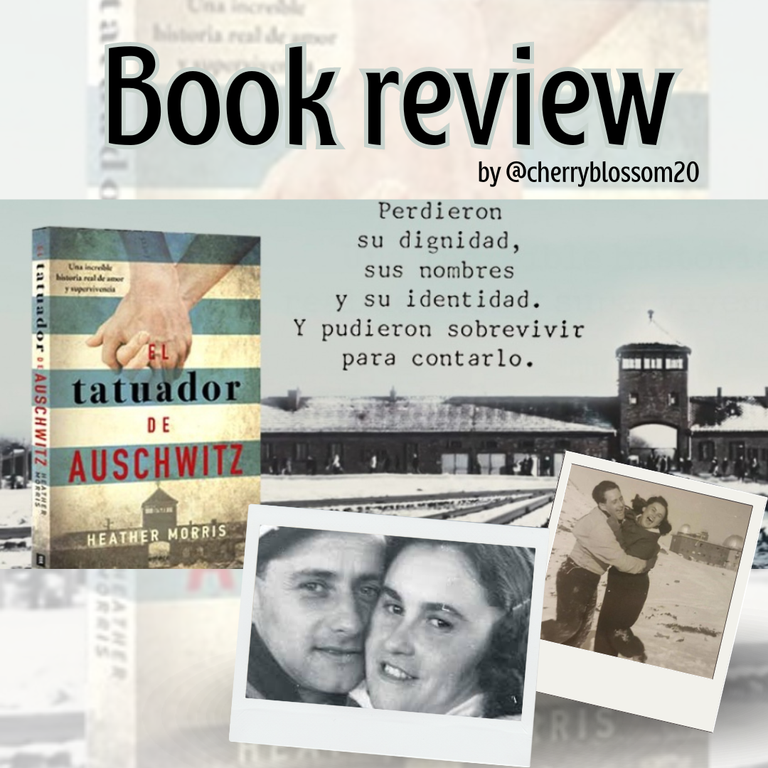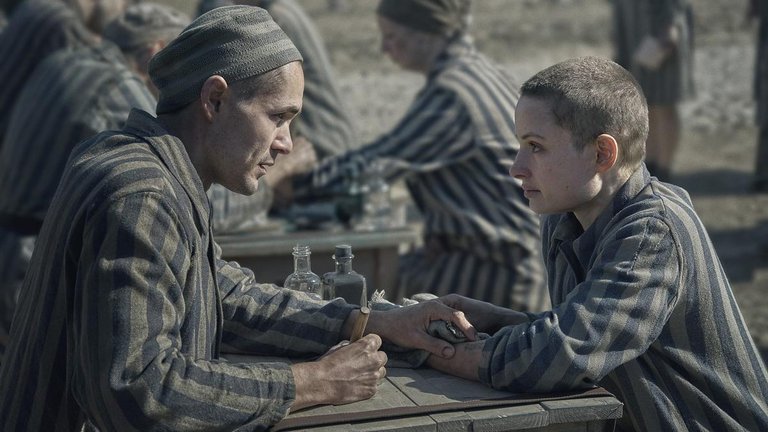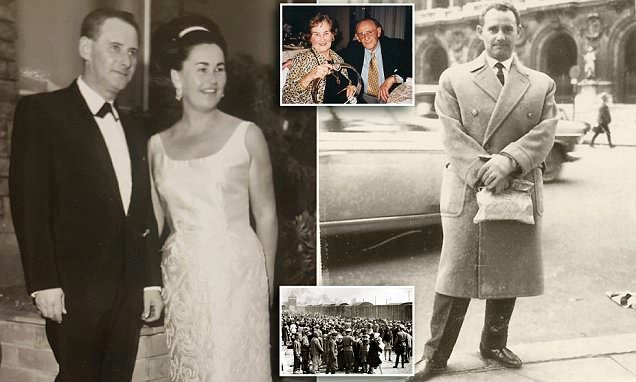
Cover by Canva
Translated by DeepL
ESPAÑOL
¡Hola a todos!
Hoy quiero hablarles de un libro que realmente me conmovió y que me dejó pensando durante días después de terminarlo: "El tatuador de Auschwitz" de Heather Morris. Esta obra no solo es un relato histórico, sino también una historia de amor y supervivencia que nos muestra la fortaleza del espíritu humano en las circunstancias más adversas.
ENGLISH
Hi everyone!
Today I want to tell you about a book that really moved me and left me thinking for days after finishing it: "The Tattooist of Auschwitz" by Heather Morris. This work is not only a historical account, but also a story of love and survival that shows us the strength of the human spirit in the most adverse circumstances.
Trama
La novela se centra en la vida de Lale Sokolov, un judío eslovaco que es deportado al campo de concentración de Auschwitz-Birkenau durante la Segunda Guerra Mundial. Allí, debido a su conocimiento de varios idiomas, Lale es designado como el Tätowierer, el encargado de tatuar números en los brazos de sus compañeros prisioneros. Aunque al principio se siente culpable por su papel, pronto se da cuenta de que esta posición le ofrece ciertas ventajas que puede usar para ayudar a otros.
Un día, mientras realiza su sombrío trabajo, Lale conoce a Gita Furman, una joven prisionera de quien se enamora a primera vista. A lo largo de la novela, la relación entre Lale y Gita se convierte en el eje central de la trama, proporcionando una luz de esperanza y amor en medio del horror del Holocausto.
Plot
The novel centers on the life of Lale Sokolov, a Slovak Jew who is deported to the Auschwitz-Birkenau concentration camp during World War II. There, due to his knowledge of several languages, Lale is designated as the Tätowierer, the one in charge of tattooing numbers on the arms of his fellow prisoners. Although he initially feels guilty about his role, he soon realizes that this position offers him certain advantages that he can use to help others.
One day, while performing his grim job, Lale meets Gita Furman, a young prisoner with whom he falls in love at first sight. Throughout the novel, the relationship between Lale and Gita becomes the central focus of the plot, providing a light of hope and love in the midst of the horror of the Holocaust.
Personajes
Lale Sokolov: El protagonista, cuyo ingenio y valentía le permiten no solo sobrevivir, sino también ayudar a otros prisioneros.
Gita Furman: El amor de Lale, una joven cuya ternura y fortaleza inspiran a Lale a seguir adelante.
Pepan: El anterior Tätowierer que enseña a Lale el oficio y le muestra la importancia de mantener la humanidad en medio de la barbarie.
Baretski: Un guardia de las SS cuya relación con Lale es compleja y que añade una dimensión interesante a la narrativa.
Characters:
Lale Sokolov:* The protagonist, whose resourcefulness and bravery allow him not only to survive, but also to help other prisoners.
Gita Furman: Lale's love, a young woman whose tenderness and strength inspire Lale to carry on.
Pepan: The former Tätowierer who teaches Lale the trade and shows her the importance of maintaining humanity in the midst of barbarism.
Baretski: An SS guard whose relationship with Lale is complex and who adds an interesting dimension to the narrative.
Link
Aspectos más importantes
Uno de los aspectos más notables del libro es cómo Morris logra humanizar a los personajes, mostrando no solo su sufrimiento, sino también su capacidad de amar, soñar y resistir. El hecho de que la historia esté basada en hechos reales la hace aún más impactante. Lale Sokolov realmente existió, y su relato es un testimonio de la resiliencia y la bondad en tiempos de oscuridad.
Highlights
One of the most remarkable aspects of the book is how Morris manages to humanize the characters, showing not only their suffering, but also their capacity to love, dream and resist. The fact that the story is based on true events makes it even more powerful. Lale Sokolov really existed, and his story is a testament to resilience and kindness in times of darkness.
Mi opinión
"El tatuador de Auschwitz" es una novela poderosa y emotiva. Heather Morris ha hecho un trabajo admirable al recrear esta historia verídica, combinando rigor histórico con una narrativa fluida y accesible. Sin embargo, algunos críticos han señalado que la obra a veces peca de simplificar demasiado la realidad del Holocausto, enfocándose en exceso en el aspecto romántico. Si bien es cierto que la historia de amor entre Lale y Gita es conmovedora, algunos pueden sentir que la crudeza del contexto histórico no siempre se refleja con toda su brutalidad.
En mi opinión, este balance entre la tragedia y la esperanza es lo que hace que el libro sea accesible para un amplio público, permitiendo que más personas conozcan y reflexionen sobre este oscuro capítulo de la historia. La relación entre Lale y Gita es un recordatorio de que incluso en los peores momentos, el amor y la humanidad pueden prevalecer.
En resumen, "El tatuador de Auschwitz" es una lectura obligada para aquellos interesados en historias de la Segunda Guerra Mundial, pero también para cualquiera que busque una narrativa de amor y esperanza en tiempos de adversidad. Es una novela que te hará llorar, reflexionar y, sobre todo, valorar la capacidad del ser humano para encontrar luz incluso en los lugares más oscuros.
¡Espero que se animen a leerla y que les impacte tanto como a mí!
Hasta la próxima reseña
My opinion
"The Auschwitz Tattooist is a powerful and emotional novel. Heather Morris has done an admirable job of recreating this true story, combining historical rigor with a fluid and accessible narrative. However, some critics have noted that the work sometimes errs on the side of oversimplifying the reality of the Holocaust, focusing too much on the romantic aspect. While it is true that the love story between Lale and Gita is touching, some may feel that the rawness of the historical context is not always reflected in all its brutality.
In my opinion, this balance between tragedy and hope is what makes the book accessible to a wide audience, allowing more people to learn about and reflect on this dark chapter of history. The relationship between Lale and Gita is a reminder that even in the worst of times, love and humanity can prevail.
In short, "The Tattooist of Auschwitz" is a must read for those interested in stories of World War II, but also for anyone looking for a narrative of love and hope in times of adversity. It is a novel that will make you cry, reflect and, above all, appreciate the ability of human beings to find light even in the darkest of places.
I hope you are encouraged to read it and that it impacts you as much as it did me!
Until next review.


